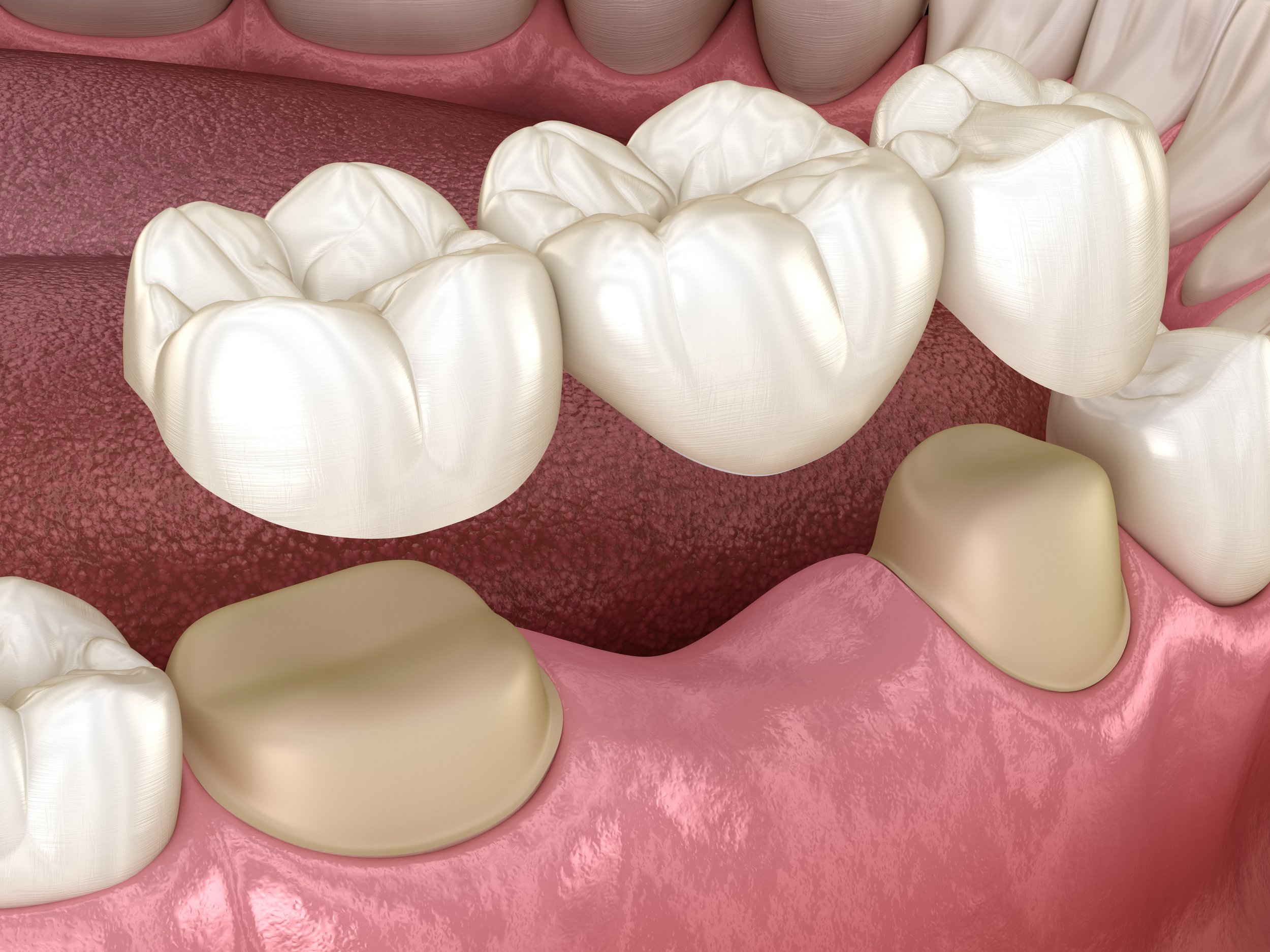What are my options for resolving a missing tooth in the back of my mouth?
Missing teeth can range from aesthetic troubles to eating struggles. When it comes to the back teeth, the problem tends to be the latter. Better functionality of teeth is something worth looking into.
The good news: you have some options! Dental Bridges provide a great way to fulfill both aesthetic and functionality losses that come with missing teeth.
A Dental Bridge is a false tooth connected to the teeth or tooth beside it. Two primary types of dental bridges can work well for the teeth in the back of your mouth (molars and premolars):
Traditional Bridges
Implant-supported Bridges
Traditional Bridges
A traditional bridge needs a natural tooth to connect to each side. The false tooth (Pontic) can connect to the natural teeth in multiple ways:
Small metal wings attached with adhesive (least invasive)
Crowns on both adjacent teeth attached to the false tooth (more secure)
The only catch with going the traditional route is sometimes molars do not have an adjacent tooth on each side. But they are the more cost-friendly option of the two.
Implant-supported Bridges
An implant is also a fake tooth, but the tooth is supported by a metal root that is like a screw - surgically placed. If you are missing more than one back molar, and do not have adjacent teeth on both sides of the missing teeth, attaching a bridge to a dental implant is an option to replace the teeth.
While Implant-supported Bridges are more expensive and require surgery, they are also incredibly strong - an attribute that molars and premolars need most. Back teeth support the most chewing pressure. The implant can also prevent jawbone loss.
Options
To discuss which option best suits your situation, reach out to a dentist at My Ogden Dentist.

